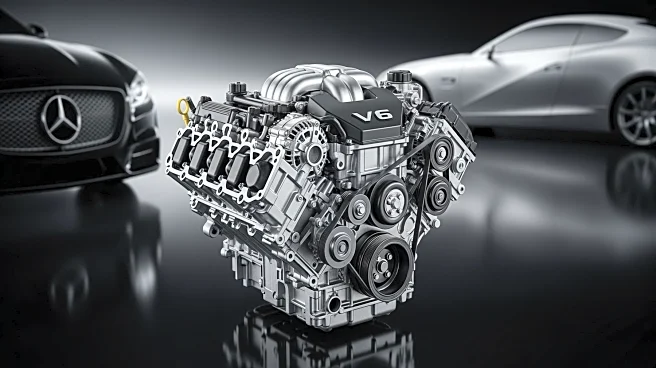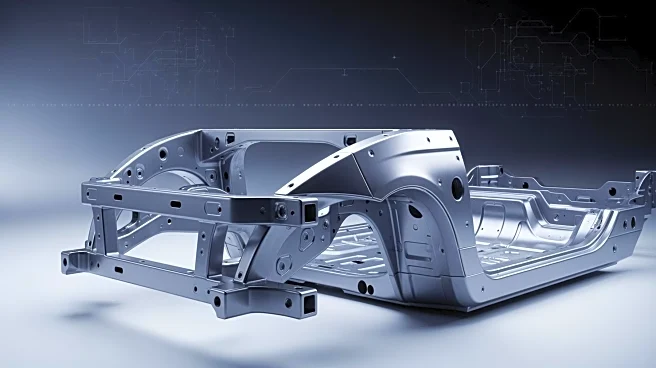What's Happening?
Dodge has announced the return of the V-6 engine option for its Durango GT trim in the 2026 lineup, following consumer demand. The 3.6-liter Pentastar V-6 engine, which produces 295 horsepower and 260 pound-feet of torque, was previously removed in favor of an all-V-8 powertrain lineup. The decision to reintroduce the V-6 comes as the supply of Hemi engines increases. The 2026 Durango GT with the V-6 will be priced at $40,990, which is $500 more than the 2025 model but $3,500 cheaper than the GT Hemi. The V-6 option makes the Durango more competitive in the three-row SUV market, where it previously ranked as one of the most expensive options. The Durango has been in production since 2010, and while updates have been made over the years, a new
model is expected in 2029.
Why It's Important?
The reintroduction of the V-6 engine in the Dodge Durango GT trim is significant for both consumers and the automotive industry. It reflects Dodge's responsiveness to consumer preferences, as the V-6 option provides a more affordable entry point into the Durango lineup. This move could enhance Dodge's competitiveness against other popular three-row SUVs like the Kia Telluride and Ford Explorer, which offer lower starting prices. Additionally, the decision to bring back the V-6 engine may influence other automakers to reconsider their powertrain offerings in response to market demand. For consumers, the availability of a less expensive option with adequate power could lead to increased sales and customer satisfaction.
What's Next?
With the order books for the V-6-powered Durango GT now open, Dodge is likely to monitor consumer response closely. The company may adjust its production strategy based on demand for the V-6 versus the V-8 models. As the automotive industry continues to evolve, Dodge's decision could prompt other manufacturers to reevaluate their engine offerings and pricing strategies. Additionally, the anticipated release of a new Durango model in 2029 suggests that Dodge will continue to innovate and adapt to consumer preferences in the coming years.
















